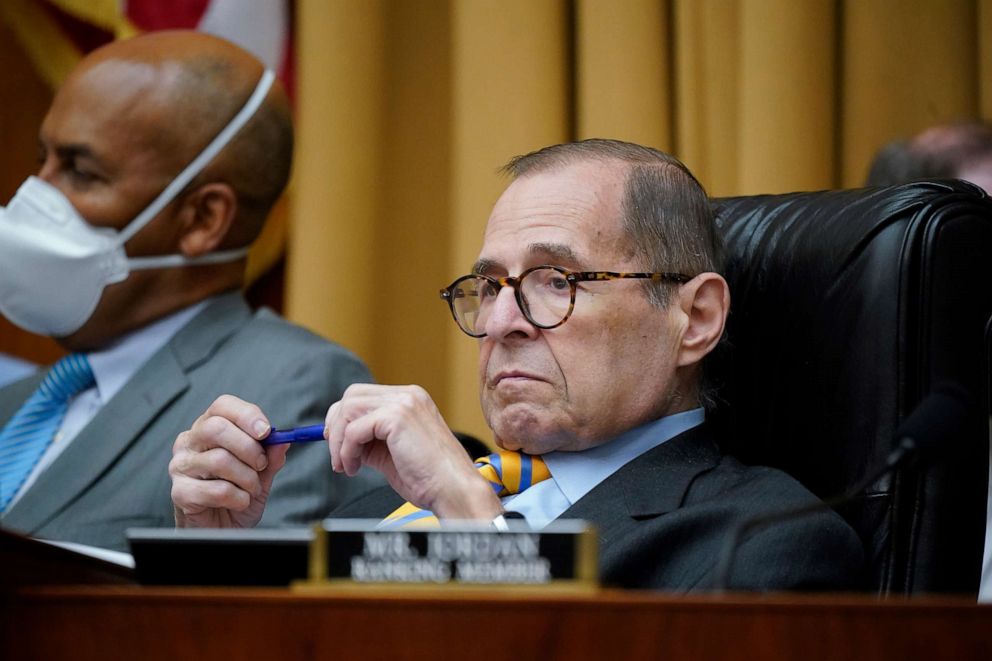Post-redistricting maps could push candidates toward fringes
The focus on primary races has helped prop up those who embrace the "big lie."
The once-a-decade process of redrawing the country's congressional districts has given Republicans a major edge -- but that's not the only consequence.
Potential red wave aside, this new slate of maps has reduced competition for congressional seats and, in turn, put unbalanced focus on primary races over general elections -- potentially forcing candidates to play to their parties' more partisan edges to lock up the vote, including supporting the baseless "big lie" that former President Donald Trump was the legitimate winner of the 2020 election.
"The decline of competitive districts due to redistricting has created a little more opportunity for election deniers to get elected," said FiveThiryEight's Nathaniel Rakich in an email. "That said, there were already more than 150 safely Republican congressional districts before this round of redistricting, so there would have still been ample space for the ‘big lie’ to thrive even without redistricting."
Reuters law professor John Farmer Jr., who was a part of the last cycle New Jersey's redistricting process as the state's attorney general said as states have opted to draw maps where districts are more partisan, the primaries become where the action is.
"I think it's been very bad for the country," he said. "It absolutely is a driver of polarization, because essentially it all boils down to who votes in the primaries. And that tends to be the more intense and more rabidly partisan members of the electorate. And so if that's where the competition is going to be, you can see how it could drive the parties apart."
Farmer says the dynamic enables candidates from the far right and far left to rise to victory early, all but guaranteed to carry the seat in the general election even while alienating moderate voters, like many who live in Jersey.

Rakich writes that it "hurts the average voter who just wants their voice to matter," especially non-white voters.
"This is difficult, if not impossible, to quantify since a racial group does not have to constitute a majority of a district in order for that district to elect that racial group's preferred candidate," Rakich writes. "But districts in Florida, Georgia, Maryland, Michigan, Nevada and North Carolina all got whiter to the extent that their ability to consistently elect Black or Hispanic voters' candidate of choice is now in question."
New Jersey Democrat Susan Blanco told ABC News she worries about the unintended consequence of candidates racing to the fringes of their party.
"And with the way things are leaning Republican, we're really concerned about the representation, what's happened to our last Republican congressman who once the tide shifted, stopped being moderate, and all of a sudden he's not supporting a woman's right to choose," said Blanco.

This effect can be seen as "big lie" supporting candidates notch wins during the primary season. In fact, more than half of the Republican primary winners so far have sewed some sort of doubt about the legitimacy of the 2020 presidential election.
"What we’ve found is that Republican candidates running in purple or blue states or districts are less likely to embrace Trump’s false election-fraud claims -- probably because that type of candidate would have trouble persuading swing voters in the general election," Rakich said. "For example, only 6 of the 19 Republican candidates for Oregon governor this year were election deniers, but 4 of the 8 Republican candidates for Idaho governor were."
In Blanco's home state, lawmakers decided to follow national trends and shore up eleven of their twelve districts as safer in both partisan directions. The one district left in competitive territory? The home of Rep. Tom Malinowski, a Democrat now left to battle it out with a Republican challenger who could very well flip his very swingy area and flip a seat for the GOP in November.
Malinowski told ABC News around the time of his June 6 primary that he cares less about having a tougher race and more about the consequences on the electorate.
"Setting aside the fact that I have to work hard, I don't mind having to work hard. And that's what I got into this for," Malinowski said. "I don't think it's healthy for the country that the overwhelming majority of Americans live in congressional districts where the primary is the only thing that matters, where the general election has been decided by the people who drew the map."




